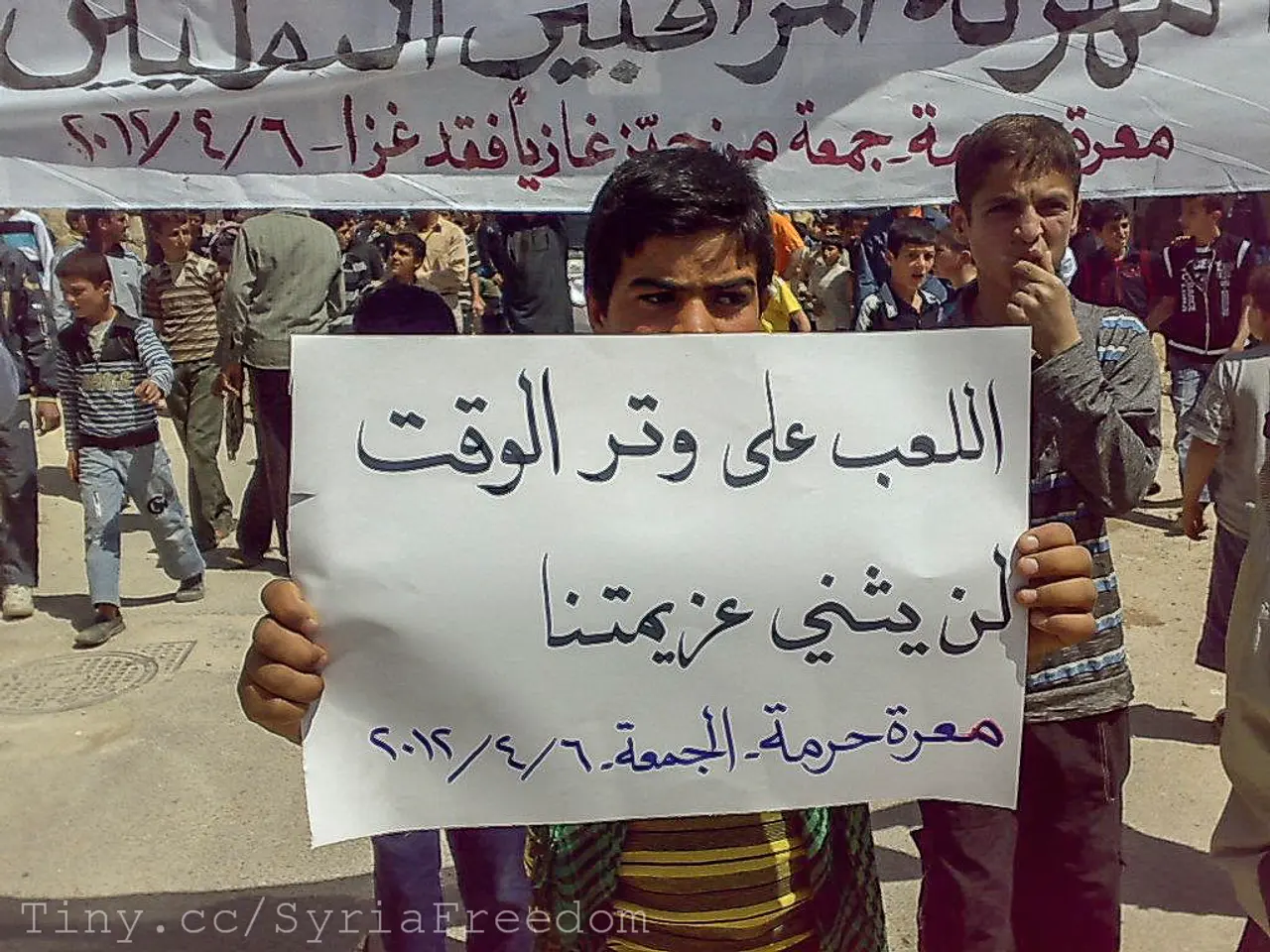EU Expresses Concerns Over Israel's Compliance with Assistance Agreement for Gaza Strip
In August 2023, Israel agreed to increase humanitarian aid access to the Gaza Strip under an EU-mediated deal. The agreement aimed to improve the supply of aid to the distressed civilian population, including a significant increase in daily food deliveries and other aid goods by truck. However, the implementation and monitoring of this agreement remain weak and largely reliant on indirect supervision by Egyptian, Jordanian authorities, and UN bodies, with Israel rejecting direct UN monitoring [1][2].
The deal brokered in July 2023 improved the official commitment by Israel to facilitate aid delivery into Gaza. This included the reopening of crossing points Zikim, Netzarim, and Kisufim and the resumption of fuel deliveries [1][2]. Despite these commitments, EU officials and humanitarian aid representatives noted only limited tangible progress on the ground by mid-2023. The UN and EU reports highlight ongoing severe humanitarian conditions, with hundreds of Palestinian casualties and widespread suffering continuing despite the agreement [3].
The UN Office for the Coordination of Humanitarian Affairs (OCHA) reported heavy casualties even shortly after the EU-Israel deal, reflecting continuing challenges and possible shortfalls in Israel’s delivery commitments [3]. Under the EU-Israel Association Agreement, respect for human rights is essential. The EU’s internal assessment in June 2023 found Israel to be in non-compliance due to human rights violations in Gaza, leading to diplomatic action but no sanctions as of that date [3][4].
EU institutions and member states remain divided on how forcefully to enforce compliance or impose sanctions, leading to delays and reliance on diplomatic measures rather than coercive ones [2][4]. Israel is still hindering humanitarian operations and the delivery of aid, according to the UN and aid organizations. The EU cannot directly verify the data due to Israeli authorities not granting EU representatives access to the Gaza Strip [2].
The agreement also includes the opening of the Zikim border crossing to northern Gaza and more border crossings to the Gaza Strip are to be opened, and the Jordanian and Egyptian aid routes are to be used again. However, these positive developments have yet to significantly alleviate the severe humanitarian crisis in the Gaza Strip, as highlighted by continued severe conditions reported by UN sources [1][3][4]. The health authority controlled by Hamas reports over 60,000 deaths in the Gaza Strip since the war began, without distinguishing between civilians and fighters [5].
The war between Israel and Hamas, triggered by a massacre on October 7, 2023, resulted in 1,200 deaths and about 250 abductions [5]. There are certain discrepancies between the numbers provided by the United Nations, humanitarian actors, and those provided by Israel [6]. The EU's diplomatic service has sent a document to its member states detailing these issues [6]. Previously, EU states had significantly increased their pressure on the Israeli government [7].
In summary, while Israel technically complied with the EU agreement terms on paper in August 2023 to allow more aid into Gaza, substantial gaps persist between official commitments and actual aid delivery and humanitarian impact, as highlighted by continued severe conditions reported by UN sources. Moreover, Israel’s refusal of direct UN monitoring creates significant discrepancies and limits independent verification of compliance [1][3][4].
References:
[1] European Union External Action (2023). EU-Israel Association Agreement: Humanitarian Aid to Gaza. [2] European Commission (2023). EU-Israel Association Agreement: Human Rights Violations in Gaza. [3] United Nations Office for the Coordination of Humanitarian Affairs (2023). Humanitarian Crisis in Gaza Strip. [4] European Parliament (2023). EU-Israel Association Agreement: Compliance and Enforcement. [5] Hamas Health Authority (2023). Death Toll in Gaza Strip Since War Began. [6] United Nations (2023). Discrepancies in Data on Gaza Strip. [7] European Union External Action (2023). EU States Increase Pressure on Israeli Government.
The EU-Israel Association Agreement, despite its aim to improve aid delivery into Gaza, has not yielded significant results on the ground by mid-2023, with the UN and EU reports highlighting ongoing severe humanitarian conditions [3]. The agreement also encompasses the opening of the Zikim border crossing to northern Gaza, yet the severe humanitarian crisis in the Gaza Strip continues to persist, as reported by UN sources [1][3][4].
Israel's refusal of direct UN monitoring creates significant discrepancies and limits independent verification of compliance with the agreement, leading to concerns about human rights violations in relation to the aid delivery and humanitarian operations [1][3][4].





